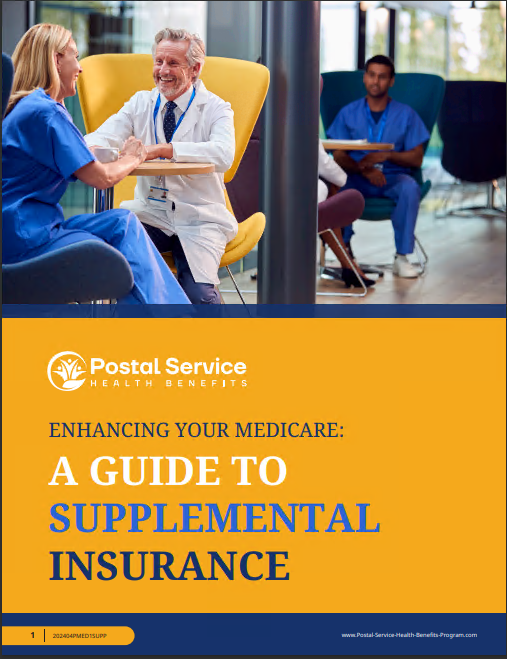Key Takeaways
-
Medigap plans vary in cost due to factors like coverage level, location, and underwriting practices.
-
Choosing the best plan requires understanding your healthcare needs, budget, and how Medicare works with Medigap.
Why Medigap Costs Vary for Postal Service Retirees and Employees
If you’re a United States Postal Service (USPS) retiree or employee considering a Medigap plan, you’ve probably noticed that some plans cost significantly more than others. While all Medigap plans with the same letter designation offer identical benefits, their premiums can vary widely. Understanding these price differences will help you make an informed decision when selecting a plan.
Factors That Influence Medigap Plan Costs
Several factors impact the cost of Medigap plans, making some options more expensive than others. Here’s what you need to consider:
-
Coverage Level: Some plans provide more comprehensive coverage, including lower out-of-pocket costs for deductibles, copays, and coinsurance. More coverage typically means higher premiums, but it can also lead to fewer financial surprises if you need frequent medical care.
-
Location: Medigap plan prices vary based on where you live. Plans in states with higher medical costs often have higher premiums, while some states regulate pricing more strictly, which may affect your options.
-
Age and Enrollment Timing: If you enroll during your Medigap Open Enrollment Period (a six-month window starting when you turn 65 and enroll in Medicare Part B), you can get a policy without medical underwriting. If you enroll later, insurers may charge higher rates or deny coverage based on your health history. Additionally, delaying enrollment may leave you responsible for more out-of-pocket costs.
-
Community-Rated vs. Issue-Age vs. Attained-Age Pricing: Medigap plans use different pricing structures that can affect your premiums:
-
Community-rated: Everyone in the same area pays the same price, regardless of age.
-
Issue-age-rated: The premium is based on your age at enrollment and does not increase due to aging, though inflation may still impact costs.
-
Attained-age-rated: The premium starts lower but increases as you age, which can result in significantly higher costs later in life.
-
-
Insurance Company Practices: Different insurers set their own rates, and some charge higher premiums due to brand reputation, administrative costs, or additional benefits like wellness programs or customer service enhancements.
-
State Regulations: Certain states have rules that impact pricing and availability, such as requiring insurers to offer plans to younger Medicare beneficiaries or those with disabilities. Some states limit rate increases or require insurers to offer certain plan types.
Choosing the Right Medigap Plan for Your Needs
Picking the right Medigap plan means balancing cost with the benefits that matter most to you. Here’s a step-by-step approach to finding the best fit:
1. Assess Your Healthcare Needs
Think about your current and future medical expenses. Ask yourself:
-
Do you frequently visit doctors or specialists?
-
Do you take costly prescription medications? (Medigap doesn’t cover prescriptions, so you may need a separate Part D plan.)
-
Do you want coverage for foreign travel emergencies?
-
Are you likely to need hospitalization or skilled nursing care in the future?
2. Compare Plan Benefits
All Medigap plans with the same letter designation offer the same benefits. However, some plans provide more coverage than others.
For example:
-
Plans with lower premiums usually require more out-of-pocket costs when you receive care. If you anticipate using healthcare services often, these plans may not be the best value in the long run.
-
Plans with higher premiums typically reduce or eliminate many of these expenses. These are ideal if you want predictable healthcare costs and don’t want to worry about high out-of-pocket expenses.
3. Consider Your Budget
Your monthly premium is only part of the equation. You should also account for:
-
Medicare Part B premiums (which you must pay regardless of your Medigap plan).
-
Other healthcare expenses, including deductibles and copayments.
-
Potential rate increases over time, especially with attained-age-rated plans.
-
Any additional insurance coverage you may need, such as a Medicare Part D plan for prescriptions or separate dental and vision insurance.
4. Enroll at the Right Time
The best time to enroll in Medigap is during your Medigap Open Enrollment Period. This is when you have guaranteed issue rights, meaning insurers cannot deny coverage or charge higher rates due to preexisting conditions. If you apply outside of this window, you may face medical underwriting, which could increase your costs or limit your plan options.
Additionally, some states allow for limited-time guaranteed issue rights outside the normal enrollment window, such as when you lose employer coverage or move to a new area. Being aware of these special circumstances can help you avoid gaps in coverage.
5. Check State-Specific Rules
Some states have unique Medigap protections. For instance, certain states offer Medigap Birthday Rules, allowing you to switch plans each year without medical underwriting. Other states provide extended eligibility periods for people under 65 with disabilities. Knowing these rules can help you make a better decision.
6. Review Future Cost Increases
While some Medigap plans start out cheaper, they may become more expensive over time. Understanding how premiums increase with age and inflation will help you choose a plan that remains affordable in the long run. Look at the historical rate increases for plans in your area to get an idea of what to expect.
How USPS Retirees Benefit from Medigap Plans
As a USPS retiree, you may have different healthcare needs than current employees. Here’s why a Medigap plan might be beneficial:
-
Comprehensive Coverage: Medigap helps cover Medicare out-of-pocket costs, reducing unexpected expenses.
-
Flexibility: You can see any doctor or specialist who accepts Medicare, with no restrictive networks.
-
Predictable Costs: Fixed premiums allow for better budgeting, especially on a retirement income.
-
Guaranteed Renewability: As long as you pay your premiums, your Medigap plan cannot be canceled, even if your health changes.
-
Travel Coverage: If you plan to travel frequently in retirement, certain Medigap plans provide coverage for emergency medical care outside the U.S.
Common Mistakes to Avoid When Choosing a Medigap Plan
To make the best decision, be aware of these common pitfalls:
-
Waiting Too Long to Enroll: If you delay enrolling, you could face higher costs or medical underwriting.
-
Choosing Based on Price Alone: The cheapest plan may not provide enough coverage, while the most expensive plan may include benefits you don’t need.
-
Ignoring Future Costs: Some plans have lower initial premiums but increase significantly over time.
-
Overlooking State-Specific Options: If your state has special enrollment rules, take advantage of them to secure better coverage.
-
Failing to Plan for Prescription Coverage: Medigap does not cover prescriptions, so you may need a separate Medicare Part D plan.
Making the Right Choice for Your Healthcare Future
Understanding why Medigap costs vary and how to choose the best plan will help you make a confident decision. Consider your current health, budget, and potential future needs before committing to a plan. If you need personalized advice, reach out to a licensed agent listed on this website for guidance tailored to your situation.







